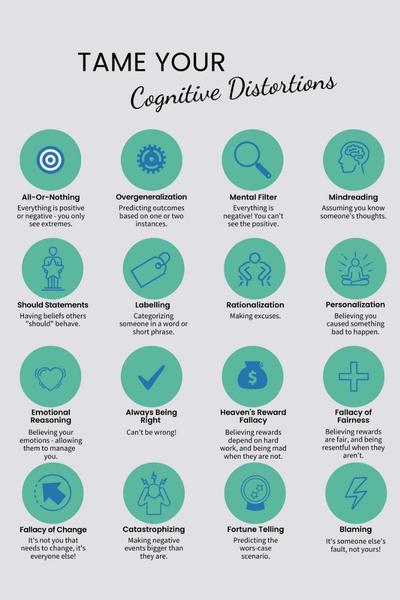Tame your Cognitive Distortions: 3 Tips

We always hear how important it is to leave our biases out of root cause investigations, but it’s easier said than done. We can be as stubborn as a bull about changing our thought patterns. However, cognitive distortions not only derail incident investigations but also cause anxiety and depression. It’s worth the effort to tame them.
What are Cognitive Distortions?
Cognitive distortions are biases that we develop over time because the human brain can only process a limited amount of information at any given moment. So, it seeks shortcuts to decrease the burden on itself.
We’re always trying to interpret and make sense of things happening around us, but the shortcuts we use are not 100% accurate. Sometimes they can be very inaccurate! Further, they spur us on to actions that are not productive.
For example, biases can cause us to jump to conclusions or blame ourselves. They can make us magnify situations to be more dramatic than they really are (or cause us to minimize situations that truly are catastrophic). They can also make us overgeneralize when we have limited experience.

The first step in taming your cognitive distortions is to recognize you have them. Above are examples of cognitive biases. Do you recognize yourself in any of them? If you are a human being, you do!
Everybody experiences them so there’s no shame in it. Our thoughts can be very convincing, and if you don’t challenge them, they have a profound negative effect on your emotional state.
3 Ways to Minimize the Harmful Effects of Biases
While it’s not possible to eliminate biases if you have a human brain, you can minimize negative effects on decision-making in your incident investigations. Following are some ideas:
- Look for information that disproves or counters your current perspective. This is the opposite of what we typically do, which is to only look for information that proves our perspective.
- Improve your emotional intelligence. Being more aware of and managing your emotions effectively will help you to avoid making poor decisions that may occur when you have a strong bias.
- Be curious. Curiosity is the antidote to being misguided by inaccurate, closely-held beliefs. Ask questions and be open to receiving different perspectives without judgment.

BONUS Idea: Use a Proven Process to Minimize Bias in Your Investigations
Using the TapRooT® Root Cause Analysis System for incident investigations will help because it guides you to ask questions you normally wouldn’t ask, and takes you beyond your own knowledge and experience. Whether you are new to incident investigations or are a seasoned investigator, biases are having an effect on how you do your job and undermine the results you could be getting to improve performance.
Read our root cause analysis course descriptions:
2-Day TapRooT® Root Cause Analysis
3-Day VIRTUAL TapRooT® Root Cause Analysis
5-Day TapRooT® Advanced Root Cause Analysis Team Leader Training
And consider not only taming your biases but also changing the way you solve problems at your facility by registering for a course.



